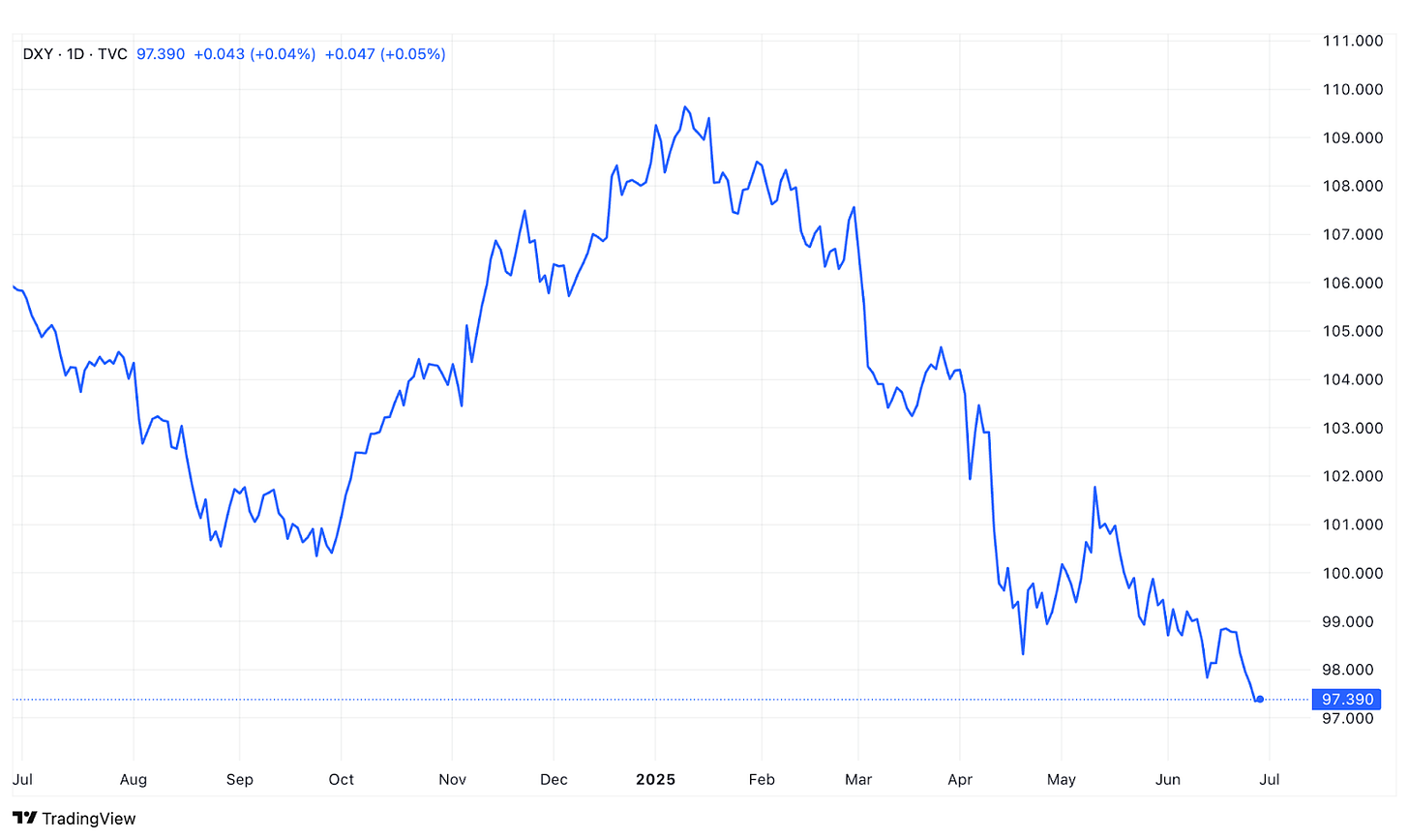Powell Might Be Worried About Trump; He Should Be Worried About The Housing & Labor Markets
It’s probably no secret that Donald Trump doesn’t like Jerome Powell. He has railed against him both privately and publicly, calling him “dumb”, “terrible” and “hard-headed”. And that’s just in the past three days.
As I alluded to in yesterday’s high yield report, if Trump can’t get Powell to lower the Fed Funds rate, he’s going to force it lower himself. His trade war has eroded confidence in U.S. assets, pushing the dollar lower since January. His latest attacks on Powell have created a cloud of uncertainty about how far he might go and how politically independent the Fed might actually be when he replaces Powell next year. That’s driven the dollar further to a 3-year low.
Effectively, Trump got what he wanted, a weaker dollar. He just needed to use non-traditional means to get it.
But the fact remains that the Fed Funds rate hasn’t moved at all in 2025. That’s likely to change by September, but the big question is whether the Fed has already waited too long to adjust rates according to conditions.
Powell has consistently used the fight against inflation as his justification for keeping monetary conditions restrictive. He’s not altogether wrong. While the headline inflation is near the Fed’s 2% target, rent and services inflation are still hovering close to 4%.
But the other part of the Fed’s mandate is to target full employment. If Powell and company are just paying attention to the U-3 unemployment rate, which is currently sitting at 4.2% as of May, you’d probably think “mission accomplished”.
There’s also the economic growth factor to consider. The GDP growth rate turned negative in Q1 thanks to businesses and consumers rushing to import foreign goods before the Trump tariffs went into effect. Now that the trade war seems to be moderating, economists are expecting a strong rebound in Q2. Again, in isolation, this looks like “mission accomplished”.
But there’s nuance to this. The high level numbers most often appearing in the financial media don’t always tell the whole story. If you look at the more complete picture, there are some troubling trends.
Increased Housing Supply
If you look at recent home prices, you’d probably think the residential housing market is still rock solid. To be fair, it’s probably still in relatively good shape at the moment, but things might be trending in the wrong direction.
Housing supply has markedly increased over the past year. We’ve heard all the stories about how homeowners with 3-4% mortgages are content staying where they are because they don’t want to refinance at a much higher rate. That’s helped squeeze supplies to some extent (and support home prices), but that doesn’t tell the whole story.
Keep reading with a 7-day free trial
Subscribe to The Lead-Lag Report to keep reading this post and get 7 days of free access to the full post archives.


